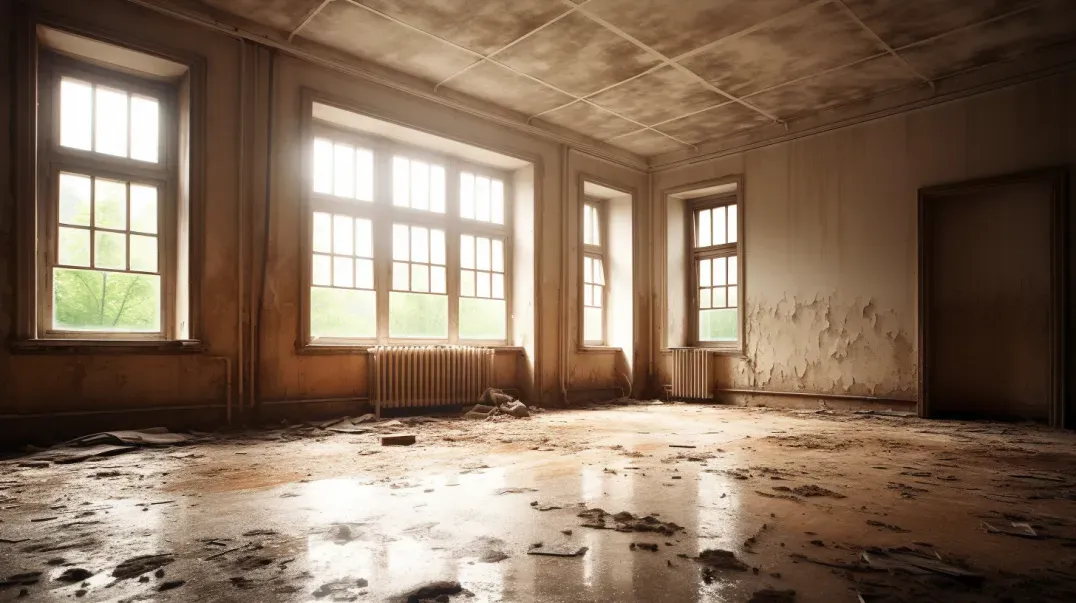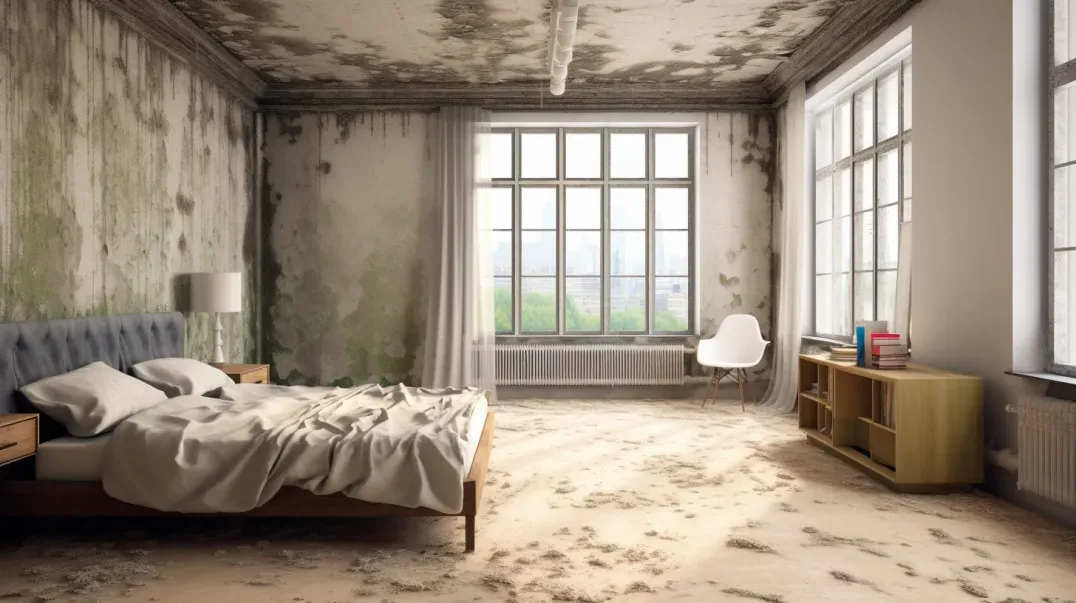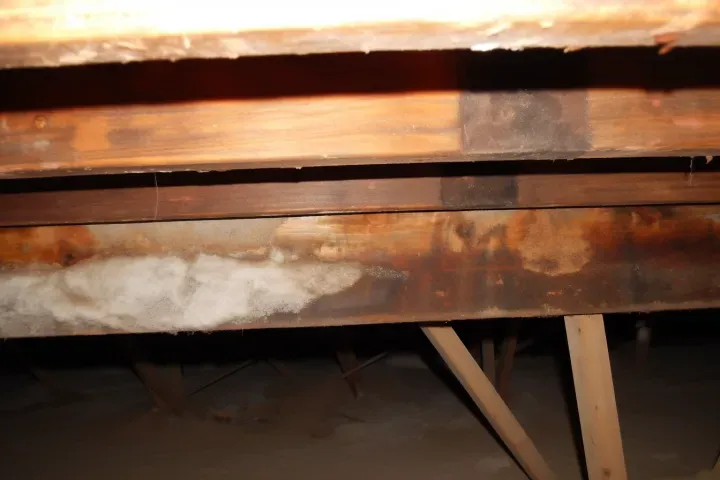Professional Mold Inspection for Crawl Spaces
Welcome to an essential discussion on the importance of mold inspection in crawl spaces, a key aspect of maintaining a healthy home environment. Often hidden and overlooked, crawl spaces can harbor mold growth, posing significant risks to both the structure of your home and the well-being of its inhabitants. In this blog, we will delve into why regular mold inspections are crucial in these areas and explore the potential risks associated with unchecked mold growth.
Mold in crawl spaces is not just a minor issue; it's a concern that can escalate quickly, leading to extensive damage and health problems. Due to their typical conditions – damp, dark, and poorly ventilated – crawl spaces provide an ideal breeding ground for mold. Without regular inspections and timely intervention, mold can spread undetected, undermining the structural integrity of your home and adversely affecting indoor air quality.
The risks associated with mold growth in crawl spaces are multifaceted. From triggering allergies and respiratory issues to causing wood rot and compromising the foundation of your home, the impact of mold can be far-reaching. Understanding these risks is the first step in taking proactive measures to protect your home and health.
Join us as we uncover the importance of mold inspection in crawl spaces, highlighting the need for vigilance and timely action to prevent the potential hazards of mold infestation.
Understanding the Need for Professional Mold Inspection
While DIY approaches to home maintenance are valuable, certain tasks, like mold inspection, often require the expertise of professionals. This section discusses the limitations of DIY mold detection and the benefits of opting for a professional inspection, emphasizing why expert involvement is crucial in certain scenarios.
Limitations of DIY Mold Detection
Challenges and Limitations Homeowners Face in Detecting Mold
DIY mold detection can be challenging for several reasons:
- Hidden Growth: Mold can grow in areas that are not easily visible or accessible to homeowners, such as behind walls, under floors, or in HVAC systems.
- Identification Accuracy: Differentiating between mold types and understanding the extent of an infestation requires expertise. Homeowners might not be able to accurately identify mold or assess the severity of the situation.
- Health Risks: Handling mold without proper safety equipment or knowledge can pose health risks, especially for individuals with allergies or respiratory issues.
- Incomplete Removal: DIY efforts might address surface mold but fail to tackle the underlying moisture issues, leading to recurring mold problems.
Benefits of Professional Inspection
Expertise, Thoroughness, and Accuracy in Professional Assessments
Professional mold inspections offer several advantages:
- Expertise: Professionals have the training and experience to accurately identify mold types and sources. They understand the conditions that foster mold growth and can provide effective solutions.
- Thoroughness: Professionals use specialized tools and techniques to conduct comprehensive inspections, including areas that are not immediately visible.
- Accurate Assessments: With their expertise, professionals can accurately assess the extent of the mold issue and the potential risks it poses to the structure and occupants of the home.
- Detailed Reports and Recommendations: A professional inspection typically results in a detailed report outlining the findings and recommendations for remediation and prevention.
- Peace of Mind: Knowing that a thorough inspection has been conducted by experts can provide homeowners with reassurance and guidance on the appropriate next steps.
What Does a Professional Mold Inspection Entail?
Understanding what happens during a professional mold inspection can help homeowners prepare for the process and appreciate the value of this service. This section provides a step-by-step introduction to the inspection process and highlights advanced techniques used by professionals.
The Inspection Process
Step-by-Step Introduction of What Happens During a Professional Mold Inspection
A professional mold inspection typically includes the following steps:
- Visual Examination: Inspectors start with a thorough visual examination of the property, focusing on areas prone to moisture accumulation and mold growth, such as basements, crawl spaces, bathrooms, and areas around plumbing fixtures.
- Moisture Measurement: Using moisture meters, inspectors measure the moisture levels in various parts of the home. Elevated moisture levels can indicate potential sites for mold growth.
- Sample Collection for Lab Analysis: In some cases, inspectors collect air, surface, or material samples to be analyzed in a lab. This analysis can identify specific mold types and spore counts, which is crucial for assessing health risks and determining the appropriate remediation strategy.
Advanced Techniques Used by Professionals
Introduction to Tools Like Infrared Cameras and Moisture Meters
Professional mold inspectors utilize advanced tools to enhance the accuracy of their assessments:
- Infrared Cameras: These cameras detect temperature variations in walls and floors, helping inspectors identify hidden moisture problems that are not visible to the naked eye.
- Moisture Meters: These devices measure the moisture content in various building materials. High moisture readings often indicate potential mold growth areas.
- Digital Hygrometers: Used to measure the humidity levels in different areas of the home. High humidity can promote mold growth.
- Borescopes: A borescope, a small camera on a flexible tube, allows inspectors to visually examine hard-to-reach areas, like inside ductwork or behind walls, for signs of mold growth.
Identifying Different Types of Mold in Crawl Spaces
Mold in crawl spaces is a common issue in many homes, and identifying the types of mold present is crucial for effective remediation and maintaining a healthy living environment. This section provides an overview of common mold varieties found in crawl spaces and their potential health and structural implications.
Common Mold Varieties Found in Crawl Spaces
Description of Mold Types Typically Found in These Areas
Several types of mold are commonly found in crawl spaces due to the typically damp and dark conditions:
- Aspergillus: Often appearing in green or black, Aspergillus is a common mold that can cause respiratory issues and allergic reactions.
- Penicillium: Recognizable by its blue or green color, Penicillium can spread quickly in damp environments and is known to cause allergies and asthma.
- Stachybotrys Chartarum (Black Mold): This toxic mold is black and slimy, known for producing mycotoxins that can cause serious health issues, including respiratory problems and allergic reactions.
- Cladosporium: This mold can vary in color from olive-green to brown and is known for its potential to cause respiratory problems and skin rashes.
Health and Structural Implications
Potential Health Risks and Structural Damage Caused by Different Molds
Different types of mold in crawl spaces can have varying implications for health and the structure of your home:
- Health Risks: Exposure to molds like Aspergillus and Penicillium can lead to allergic reactions, asthma attacks, and respiratory issues. Black mold exposure is particularly concerning due to its potential to cause more severe health problems.
- Structural Damage: Molds feed on organic materials, including wood and insulation found in crawl spaces. Over time, this can lead to the deterioration of these materials, compromising the structural integrity of your home. Moisture associated with mold growth can also lead to wood rot and weaken the foundation.
Interpreting Mold Inspection Reports
After a professional mold inspection, understanding the report's findings is crucial for homeowners. These reports can be detailed and technical, but they provide essential information for addressing mold issues. This section will guide you through understanding report findings and the typical recommendations for remediation and prevention.
Understanding Report Findings
How to Read and Understand the Results Provided by Professionals
A mold inspection report typically includes the following elements:
- Summary of Findings: This section provides an overview of the mold identified during the inspection, including its locations and the extent of the infestation.
- Mold Types: The report may specify the types of mold found, which is important for understanding potential health risks and the urgency of remediation.
- Moisture Levels: Since mold growth is often associated with moisture, the report will detail areas of high moisture and possible sources of water intrusion.
- Photographic Evidence: Many reports include photos of the affected areas, providing visual proof of the mold and related damage.
- Lab Results: If samples were taken for analysis, the report will include lab results that detail the concentration and types of mold spores present.
Recommendations and Action Plans
Typical Recommendations for Remediation and Prevention
Based on the findings, the report will also include recommendations for addressing the mold issue:
- Remediation Steps: This includes methods for removing the mold, such as cleaning with specialized solutions, removing contaminated materials, and addressing the sources of moisture.
- Preventive Measures: The report may suggest ways to prevent future mold growth, like improving ventilation, fixing leaks, installing dehumidifiers, or applying mold-resistant coatings.
- Follow-Up Inspections: In some cases, the report might recommend follow-up inspections to ensure that the mold has been effectively removed and that preventive measures are working.
- Referrals to Specialists: If the problem is extensive, the report may suggest consulting with remediation specialists or contractors for more comprehensive solutions.
Choosing the Right Mold Inspection Service
Selecting the right mold inspection service is a critical decision for homeowners facing potential mold issues. The expertise and thoroughness of the service you choose can significantly impact the effectiveness of the inspection and subsequent remediation efforts. This section discusses the qualifications and credentials to look for in a professional service and key questions to ask before hiring.
Qualifications and Credentials
What to Look for in a Professional Mold Inspection Service
When evaluating a mold inspection service, consider the following qualifications and credentials:
- Certification and Training: Look for services that have certified mold inspectors. Certifications from reputable organizations indicate that the inspector has received specialized training in mold detection and remediation.
- Experience: Choose a service with extensive experience in mold inspection, particularly in dealing with residential properties. Experienced inspectors are more likely to accurately identify mold issues and recommend effective solutions.
- Insurance: Ensure that the mold inspection service is insured. This protects you in case of any damages or issues that may arise during the inspection.
- Reputation: Check online reviews, testimonials, and references to gauge the service's reputation. Positive feedback from previous clients is a good indicator of reliability and quality.
- Up-to-Date Techniques and Equipment: A reputable service should use the latest techniques and equipment for mold detection, such as moisture meters, infrared cameras, and air sampling tools.
Questions to Ask Before Hiring
Key Questions to Ensure You Choose a Qualified and Experienced Inspector
Before finalizing your decision, consider asking the following questions:
- What certifications do your inspectors hold?
- How many years of experience do you have in mold inspection?
- Can you provide references from previous clients?
- What type of equipment and techniques do you use in your inspections?
- Do you offer a detailed report post-inspection? What does it include?
- How do you handle situations where mold is detected?
- Are your services insured?
- What is the estimated cost and timeline for the inspection?
FAQs
Contact Lowcountry Crawlspaces Today!
Lowcountry Crawlspaces will do everything we can to ensure your experience with us is excellent.
Request A FREE Estimate
CHECKOUT RECENT POST



Schedule Your FREE Crawl Space Evaluation Today
There Is No Crawl Space Job We Can’t Fix!




